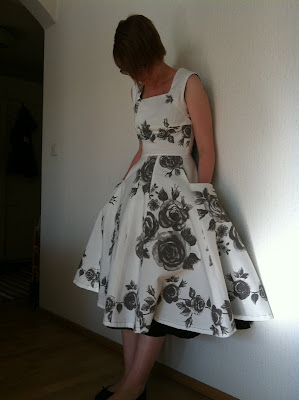Craft Friday: When knotting necklaces
where I present either a hobby jewelry technique
or project I'm currently working on.
One of the oldest forms of making necklaces is to just string beads on a cord. I think the oldest necklace I've seen a picture of was from a book I borrowed from the Turku City Library, and that one was a simple leather cord with some hollow sandstone beads and a few seashells.
It was Stone Age old, from Europe, so it was about 5 000 years old. And the same principles are still being used today by modern jewelry makers.
So, to make a "traditional necklace" all you'll need is just "cord" and "beads". I'm writing "traditional" here, because some think the most archetypal necklace is still the pearls-on-a-string. In many way it is, because that's what pops up in many people's heads when you say "necklace", but there are as many variations to be found on necklaces that there are designers.
That reminds me, if you like to see many interpretations on necklaces, I do recommend the book "500 necklaces" by the Lark Books publishing company. Their "500-series" are one of my favorite jewelry design books.
But, when knotting necklaces, trying out a design pattern on a bead board isn't everything. Before you start stringing anything, there's lots of small things that need to be thought of beforehand.
Natural fiber or synthetics for the cord? No cord at all? Should I use a lock or not, use knots between the beads or not, use pearl caps or hats or not...
This list can be quite long. Oh look, it's another list!
If you're more into fooling around with some design ideas and experimenting with the materials you have at hand, in lieu of browsing for inspiration in textbooks or on the web, then you might come up with ideas that can later be used for other projects. Or, you just really loose your patience and entertain feelings of throwing the whole thing as far as you possibly can...
But experimentation can be useful, e.g. I only learned how to knot different knots between the beads by trial and error. And cursing at the lousy photos in the book that was taking you through it step-by-step.
It's really hard to create evenly spaced knots that are of the same size.
But, a practical example of experimental stringing.
The necklace in the photo is a "sister project" to one necklae I made for Christmas 2011. The idea was to use seed beads as spacers between the beads themselves, but the problem there lies in the fact that without pearl caps/hats the small beads kept sliding into the holes of the larger beads.
But experimentation can be useful, e.g. I only learned how to knot different knots between the beads by trial and error. And cursing at the lousy photos in the book that was taking you through it step-by-step.
It's really hard to create evenly spaced knots that are of the same size.
But, a practical example of experimental stringing.
The necklace in the photo is a "sister project" to one necklae I made for Christmas 2011. The idea was to use seed beads as spacers between the beads themselves, but the problem there lies in the fact that without pearl caps/hats the small beads kept sliding into the holes of the larger beads.
 |
| The seeds beads used between the wooden beads had to be increase from 3 to 4, and then back to 3, when the holes on the larger beads were so large that the seed beads slipped into them. |
Yes, by increasing the number of seed beads by one helped, but I also needed to string together the seed beads themselves. Thus, the last seed bead got added alongside the third, and in such a way that's commonly used in peyote stitching. This, naturally, made it harder to correct the placement of the larger beads as a whole, but since the whole necklace was meant to be "static" (no beads should move from their original place) it didn't matter on the whole.
The thing that did present a problem was adding the lock, but after some experimentation on that part I came up with a solution that I was happy with on the whole.
That necklace in the photo took me about 4 hours to string, but if I remember correctly the "experimental" stage for it's sister took... I think it was 2 or 3 evenings. And it's a prime example of me loosing my patience and laying it aside for a while, even though I was actively chanting my mantra aloud in my head.


Comments
Post a Comment